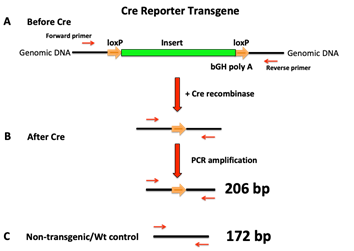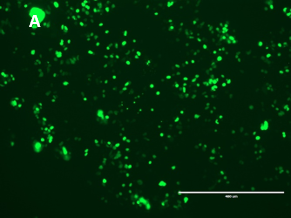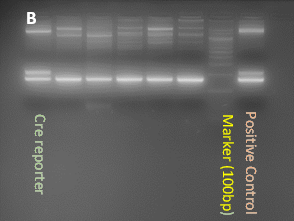Cre reporter HEK293 Cell Line
| Catalog# | Unit | Unit Price (USD) | Actions |
|---|---|---|---|
| CRE01 | 1 million cells/vial | $2,835.00 | Add to Cart |
Highlights:
ALSTEM offers Cre Recombinase Reporter HEK293 Cell Line (CRE01). This cell line is generated from HEK293 cells by transducing a lentivirus that carries a human DNA fragment in which two loxP sites in the same direction are included. When Cre recombinase is present, the genomic DNA flanked by loxP sites is deleted, resulting in a larger DNA fragment amplified by PCR than the wild-type DNA.
- Ideal for detecting Cre recombinase activity
Description:
The Cre/LoxP recombination system is a versatile and powerful tool for DNA manipulations such as deletions, insertions, translocations, and inversions at specific sites in the DNA of cells. The system uses Cre recombinase to recombines a pair of Lox sites. Depending on the direction and distance of the LoxP sites, DNA flanked by the LoxP sites can be deleted, inversed, or translocated.
Cre Recombinase Reporter HEK293 Cell Line was derived from HEK293 cells by transducing a lentivirus that carries a human genomic DNA fragment that contains an insertion with two loxP sites in the same direction (Figure 1A). This cell line will be very useful as a sensitive reporter for detecting Cre recombinase activity. When cells were transfected with a Cre expression plasmid (pLenti-EF1-Cre-GFP-PGK-PURO, Cat. Number: CRE02), the insertion was deleted in the stable cell line, but not in non-transgenic cells or wild type cells (Figure 1 B-C, Figure 2).



Specifications:
| Product Name | Cre reporter HEK293 Cell Line |
|---|---|
| Shipping Condition |
Dry Ice - Overnight Shipping |
| Storage and Stability |
Store in vapor phase of liquid nitrogen immediately upon receipt. This product is stable for 6 months when stored as directed |
| Quality Control | Each vial contains approximately 1x10^6 cells with >95% viability before freezing. Each lot of cells are tested for Cre activity, growth, and viability following recovery from cryopreservation, and free of mycoplasma and competent lentivirus as well. |
| Restricted Use |
For Research Use Only. Not for use in diagnostic or therapeutic procedures. |
